December - when the air is crisp, the holidays are approaching, and, most importantly, we celebrate National Pear Month! This month is about paying homage to the humble yet mighty pear, a versatile fruit that could easily win the "Mr. or Ms. Congeniality" title in the produce world. National Pear Month isn't just a time to enjoy this fruit's sweet, juicy delights; it's a whole 31 days of pear-adise, where we dive into the diversity, flavor, and undeniable nutritional prowess of pears. It's a month where the pear steps out of the apple's shadow, demanding its rightful place in the spotlight. We explore how this seemingly demure fruit has sashayed its way through cultural traditions, waltzed around the culinary world, and become a staple in health-conscious diets. So, let's raise a glass (of pear juice, perhaps?) to this festive and fruity celebration!
The History and Significance of Pears
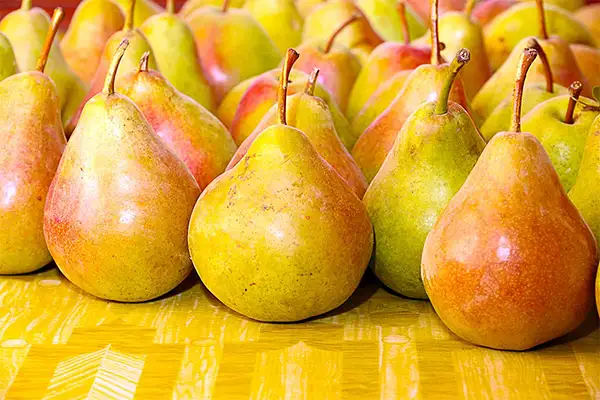 The pear, a fruit that's been playing a juicy role in human history for centuries, has quite a storied past. This tale of pears begins in the misty gardens of ancient civilizations, where they were more than just a tasty snack. The Greeks and Romans, known for their epicurean tastes, didn't just toss pears into their lunchboxes for a quick bite; they celebrated them in their literature and art and even believed pears had healing powers. The famous Greek physician Hippocrates, often called the "Father of Medicine," prescribed pears to remedy various ailments, from nausea to throat problems. It seems our ancestors were onto something even before the concept of 'food as medicine' became a modern mantra!
The pear, a fruit that's been playing a juicy role in human history for centuries, has quite a storied past. This tale of pears begins in the misty gardens of ancient civilizations, where they were more than just a tasty snack. The Greeks and Romans, known for their epicurean tastes, didn't just toss pears into their lunchboxes for a quick bite; they celebrated them in their literature and art and even believed pears had healing powers. The famous Greek physician Hippocrates, often called the "Father of Medicine," prescribed pears to remedy various ailments, from nausea to throat problems. It seems our ancestors were onto something even before the concept of 'food as medicine' became a modern mantra!
As we move through the corridors of time, the cultivation of pears spreads like a juicy rumor across Europe and into the Far East. Monks in medieval times were the unsung heroes in this chapter, diligently experimenting with pear cultivation in their monastery gardens. They were the pear pioneers, you might say, breeding new varieties and refining cultivation techniques.
Fast forward to the age of exploration, and pears find themselves setting sail across oceans. These globetrotting fruits were introduced to the Americas by colonists, who evidently couldn't bear to part with their beloved pears. Here, they found a new home and thrived, with Thomas Jefferson reportedly declaring a fondness for them at his Monticello estate.
Today, the legacy of the pear continues to flourish. From being a symbol of immortality in Chinese culture to inspiring famous French still-life paintings, pears have permeated every aspect of human culture. With thousands of varieties cultivated worldwide, each region boasting its unique type, the pear has evolved from a wild fruit of ancient woods to a global culinary star, gracing our tables in countless forms. It's safe to say that the pear, with its rich history and enduring appeal, has truly ripened into a fruit of global significance.
Varieties and Characteristics
In the grand tapestry of fruits, pears are like the threads that come in over 3,000 shades. With such a dizzying array of varieties, pears could easily host their own fashion show, flaunting their unique styles and flavors on the runway. Let's spotlight a few of the most famous pear personalities who have found a home in the United States and beyond.
First up, the Bartlett pear, the proverbial 'celebrity' of the pear world. Known as 'Williams' outside of America, this pear is the quintessential canning pear, thanks to its perfect balance of sweet and tart. It's the pear you're likely imagining when you think of pears: curvy, with a skin that turns from green to a golden yellow as it ripens, and a soft, juicy flesh ideal for eating fresh and cooking.
Then there's the Anjou pear, a.k.a. the 'all-rounder.' Available in green and red, the Anjou is a firm pear that maintains its texture well, making it a favorite for baking, poaching, and grilling. Its sweetness and subtle citrus notes make it a delightful addition to sweet and savory dishes.
The Bosc pear, with its elegant elongated shape and russeted skin, is like the sophisticated cousin in the pear family. Known for its firmer, denser texture and spicy-sweet flavor, it holds its shape beautifully when cooked, making it a star in baked goods and poached pear recipes.
But the pear parade doesn’t end there. Venture beyond these popular types, and you'll encounter the Comice pear, often hailed as the sweetest and juiciest, a true dessert pear. The Seckel pear, tiny and ultra-sweet, is nicknamed the 'sugar pear' and is a delight for snacking or as a cute addition to cheese boards.
Globally, the variety expands even further. The Asian pear, for instance, breaks the pear mold with its apple-like crunch and high water content, often enjoyed raw and prized for its refreshing texture.
Each pear variety differs not only in taste and texture but also in its seasonality and storage capabilities. Some, like the Bartlett, transition from crisp to meltingly soft as they ripen, while others, like the Bosc, maintain their firmness. This diversity makes pears incredibly versatile in the culinary world, allowing them to be the star of a wide array of dishes from around the globe.
Ultimately, each pear variety brings its unique flair to the table, creating a spectrum of flavors and textures ranging from crisp and tart to lusciously sweet and buttery. So, the next time you bite into a pear, remember you're experiencing just one of over 3,000 delicious and unique characters in the vast and varied pear universe!
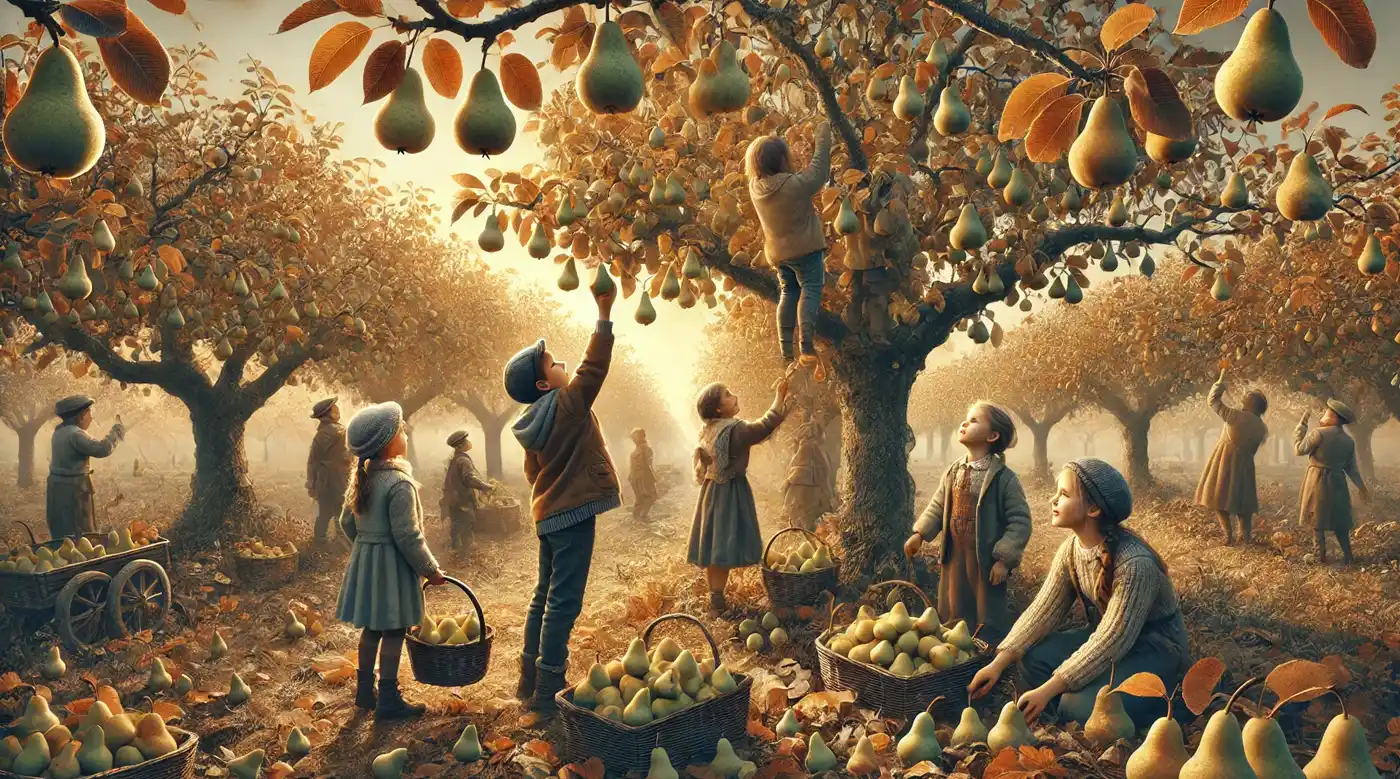
Nutritional Benefits
Labeling pears as a 'powerhouse' of nutrients might sound like a bold claim, but these unassuming fruits pack a punch in the health department. Let's peel back the layers (pun intended) to uncover the bounty of benefits hidden in each bite of a pear.
First and foremost, pears are a fantastic source of dietary fiber. This isn't just any ordinary fiber; it's a mix of soluble and insoluble fiber, like the dynamic duo of digestive health. The soluble fiber, known as pectin, keeps things moving along in your gut but also has a hand in maintaining healthy blood sugar and cholesterol levels. On the other hand, the insoluble fiber is the unsung hero keeping your digestive system in tip-top shape.
But wait, there's more! Pears are also brimming with vitamin C – the superhero vitamin known for its immune-boosting properties. A single medium-sized pear can provide up to 12% of your daily vitamin C requirement. This is especially handy in the colder months when pears are in season, and your immune system could use a little extra help.
Pears are also rich in various antioxidants, including flavonoids and polyphenols. These natural compounds are like the body's personal bodyguards, fighting off the free radicals that can cause cellular damage. Regularly consuming antioxidant-rich foods like pears can help reduce inflammation and protect against various diseases, including certain types of cancer and heart disease.
And there's a bonus for those watching their waistline: pears are relatively low in calories but high in water content, making them a filling and hydrating snack. This combination of being low in calories and high in fiber means that pears can help in weight management, keeping you fuller for longer without the calorie overload.
Pears also contain several other important nutrients in smaller amounts, such as vitamin K, essential for blood clotting and bone health, and copper, which plays a role in energy production and nervous system function.
In summary, the humble pear is more than just a sweet treat. Its impressive array of nutrients contributes to various aspects of health, from digestion and immune function to heart health and weight management. So next time you munch on a pear, remember, you're not just satisfying your sweet tooth, you're also doing your body a world of good.

Culinary Uses
With their sweet and mellow flavor, Pears are like the culinary chameleons of the fruit world. They can adapt to a wide range of dishes, adding a touch of elegance and a burst of flavor wherever they go. Let's slice into the myriad ways pears can be used in the kitchen.
Starting with the most straightforward approach: eating them fresh. With its juicy and tender flesh, a ripe pear is a delight to eat just as it is. But why stop there? Slice them up for a refreshing addition to salads, where their sweetness balances the savory and tangy flavors of dressings and other ingredients.
Then there's the realm of baking, where pears truly shine. Think of pear tarts with buttery crusts, pear breads infused with spices like cinnamon and nutmeg, and pear muffins that make a perfect breakfast or snack. Pears can be baked into cakes, where they add moisture and a delicate sweetness, or used in crumbles and cobblers for a comforting, warm dessert.
Poaching pears is another culinary art form. Poached in a mixture of wine, sugar, and spices, pears transform into an elegant, simple, and sophisticated dessert. The poaching liquid infuses the pears with rich flavors, making them wonderfully tender. Serve them with a scoop of vanilla ice cream or a dollop of whipped cream for a truly divine experience.
Pears also play well with savory dishes. Their sweetness can complement the flavors in a pork roast or add an unexpected twist to a chicken dish. Pair them with cheeses – from creamy brie to sharp blue cheese – for a classic combination that works wonderfully in appetizers or cheese boards.
Don't forget about pear preserves and chutneys. These can be a delightful way to enjoy the flavor of pears all year round. Pear preserves spread on a warm toast or a pear chutney accompanying a cheese platter can elevate a simple meal to something extraordinary.
The versatility of pears extends to beverages as well. Pear cider and pear-infused cocktails add a fruity and slightly sweet dimension to your drink repertoire. For a non-alcoholic option, pear juice or smoothies are refreshing and nutritious.
Pears are a culinary dream, offering endless possibilities, from the simplest snacks to the most sophisticated dishes. Whether you’re a professional chef or a home cook, including pears in your culinary creations can add a unique and delicious twist that's sure to impress.
Pear Farming and Harvesting
Pear cultivation is not just an agricultural activity; it's an art form, a delicate dance between nature and the farmer's skill. To understand the journey of a pear from the tree to the table, we need to delve into the intricacies of pear farming and harvesting.
The life of a pear begins in the orchard, where the choice of location, soil type, and climate plays a pivotal role in determining the quality of the fruit. Pears thrive in temperate climates and require a certain number of winter chill hours (cold temperatures) to produce fruit. Farmers must carefully select pear varieties well-suited to their specific growing conditions.
Pear trees are often grafted onto rootstocks, which control the tree's size and improve its disease resistance. This process ensures that the trees are hardy and can yield high-quality fruit. The trees are pruned annually to maintain an optimal shape for sunlight exposure and air circulation, which is crucial for the fruit's health.
As the pears grow and mature, farmers monitor them closely. Unlike some fruits, most pear varieties do not ripen well on the tree. They are picked when they are mature but still hard. The timing of the harvest is critical; if picked too early, the pears won't ripen properly, but if left too long, they can become overripe and lose their desirable texture and flavor.
Harvesting pears is often done by hand to ensure the fruit is not damaged. The pickers are trained to recognize the subtle signs of maturity, such as a slight change in the fruit's color or a gentle yielding of the flesh near the stem. Once picked, the pears are handled with care to prevent bruising.
After harvest, the real magic of pear ripening begins. Pears are unique in that they ripen from the inside out. The process is hastened by ethylene gas, which the fruit naturally produces. Commercially, pears are often stored in controlled environments where the temperature and ethylene levels are regulated to manage the ripening process.
This post-harvest ripening is why you'll often find hard pears in stores. Consumers can ripen them at home by leaving them at room temperature. Once they reach the desired ripeness, they can be refrigerated to slow down further ripening.
The journey of pear cultivation and harvesting is a testament to the skill and dedication of farmers. It's a process that requires knowledge, patience, and a deep understanding of the fruit. The next time you enjoy a pear, remember the journey it has made and the hands that have helped bring it from the orchard to your table.
Celebrating National Pear Month
National Pear Month is a time of year ripe for celebration, offering a variety of ways to honor this delightful fruit. Here are some juicy ideas to make the most out of this pear-fect month:
- Pear Tasting Party: Gather different varieties of pears and host a tasting party. This can be a fun way to appreciate each type's unique flavors and textures. Pair the pears with cheeses and wines for an added gourmet touch.
- Cooking and Baking with Pears: Challenge yourself by trying new pear recipes. The possibilities are endless, from savory dishes like pear-glazed chicken to sweet treats like pear crumble or tarte tatin. You can even organize a pear-themed potluck with friends or family.
- Visit a Local Orchard: If you live near a pear-growing region, visit a local orchard. Many orchards offer tours and allow you to pick your own pears. It’s a great way to learn about pear cultivation and support local farmers first-hand.
- Pear Preservation Workshops: Engage in a pear preservation workshop to learn how to make pear jams, preserves, or pickled pears. These skills celebrate the fruit and ensure you can enjoy its flavors year-round.
- Educational Activities for Kids: National Pear Month can be educational and fun for those with children. Activities can include pear-themed crafts, cooking classes for kids, or even simple science experiments like watching a pear ripen.
- Pear-Inspired Art and Photography: If you’re artistically inclined, use pears as your muse for drawings, paintings, or photography. Their varied shapes and colors can make for some interesting and beautiful art.
- Social Media Pear Party: Share your pear recipes, photos of your orchard visits, or pear art online using a dedicated hashtag (like #NationalPearMonth). This can help spread the love for pears and connect you with other pear enthusiasts.
- Pear-Infused Beverage Evening: Experiment with pear-infused cocktails or mocktails. Whether it's a pear martini, a spiced pear punch, or a simple pear and mint-infused water, there are a lot of scopes to get creative.
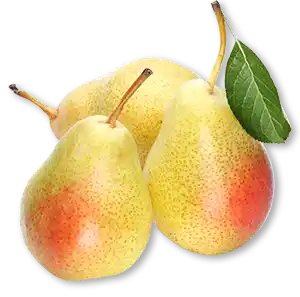 Donate Pears to Local Food Banks: Spread the joy of pears by donating them to local food banks or shelters. It’s a great way to give back to the community and share the nutritional benefits of pears with others.
Donate Pears to Local Food Banks: Spread the joy of pears by donating them to local food banks or shelters. It’s a great way to give back to the community and share the nutritional benefits of pears with others.- Learn About Pear History and Cultivars: Delve into pears' history and cultivation. Libraries or online resources can offer a wealth of information about the journey of this fruit through time and across continents.
National Pear Month is an opportunity to explore and appreciate this versatile fruit in all its forms. Whether you’re a foodie, a gardener, an artist, or a pear enthusiast, there are many ways to celebrate and enjoy the richness of pears.
National Pear Month is an excellent opportunity to explore and appreciate the richness and diversity of pears. Whether you enjoy them as a healthy snack or use them in elaborate dishes, pears offer a unique blend of taste and nutrition, making them a cherished fruit in diets worldwide.
Please Share our Content

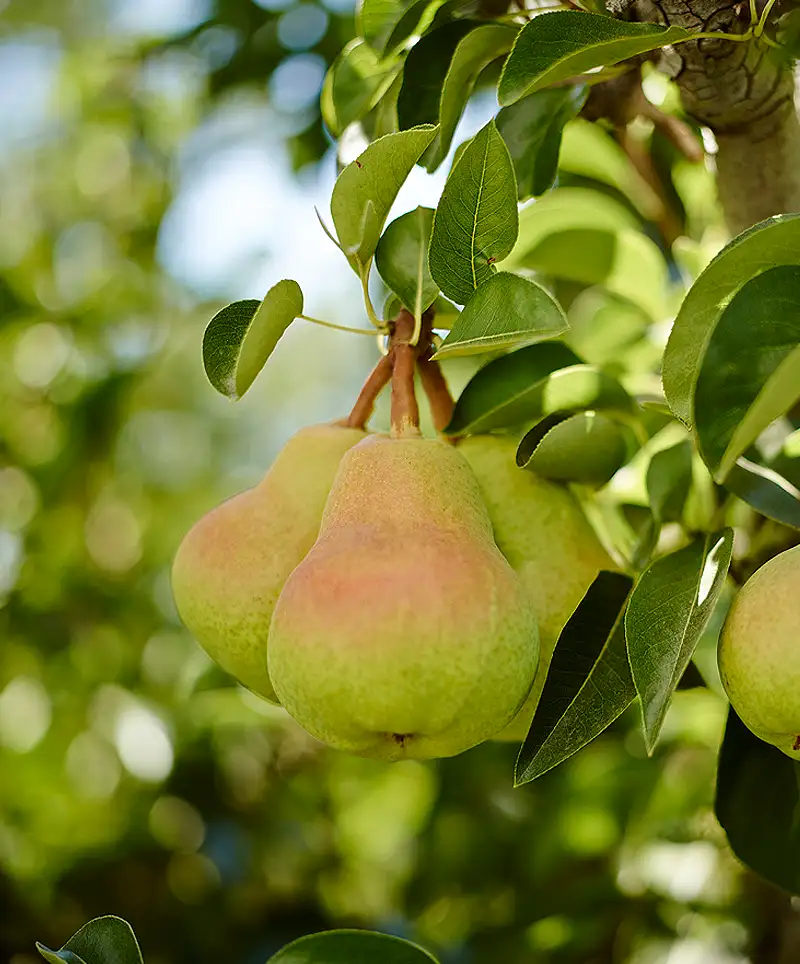
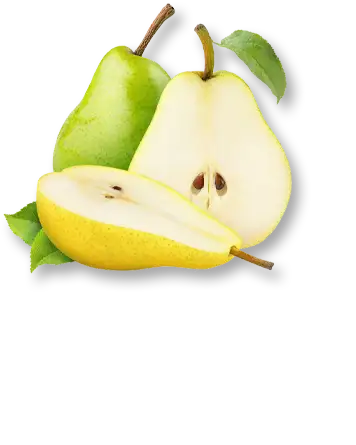



 The pear, a fruit that's been playing a juicy role in human history for centuries, has quite a storied past. This tale of pears begins in the misty gardens of ancient civilizations, where they were more than just a tasty snack. The Greeks and Romans, known for their epicurean tastes, didn't just toss pears into their lunchboxes for a quick bite; they celebrated them in their literature and art and even believed pears had healing powers. The famous Greek physician Hippocrates, often called the "Father of Medicine," prescribed pears to remedy various ailments, from nausea to throat problems. It seems our ancestors were onto something even before the concept of 'food as medicine' became a modern mantra!
The pear, a fruit that's been playing a juicy role in human history for centuries, has quite a storied past. This tale of pears begins in the misty gardens of ancient civilizations, where they were more than just a tasty snack. The Greeks and Romans, known for their epicurean tastes, didn't just toss pears into their lunchboxes for a quick bite; they celebrated them in their literature and art and even believed pears had healing powers. The famous Greek physician Hippocrates, often called the "Father of Medicine," prescribed pears to remedy various ailments, from nausea to throat problems. It seems our ancestors were onto something even before the concept of 'food as medicine' became a modern mantra!

 Donate Pears to Local Food Banks: Spread the joy of pears by donating them to local food banks or shelters. It’s a great way to give back to the community and share the nutritional benefits of pears with others.
Donate Pears to Local Food Banks: Spread the joy of pears by donating them to local food banks or shelters. It’s a great way to give back to the community and share the nutritional benefits of pears with others.








 "Sláinte!" is a traditional Irish expression used as a toast, equivalent to "Cheers!" in English.
"Sláinte!" is a traditional Irish expression used as a toast, equivalent to "Cheers!" in English.